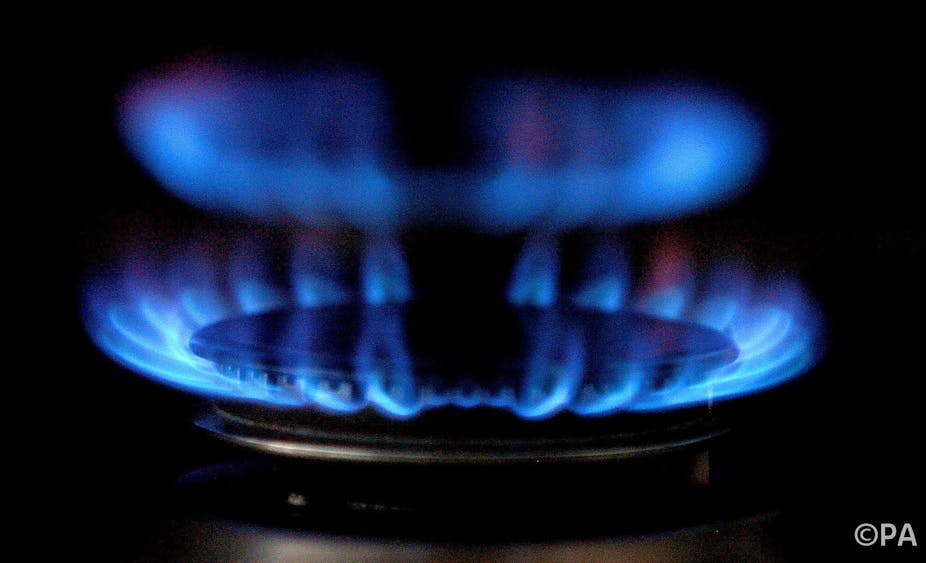Germany and the UK have ambitious clean energy policies. Both have set themselves national emission reduction targets beyond the European Union’s goal of 20% below emissions levels of 1990. Germany has committed itself to a 40% cut by 2020, the UK a reduction of 35% by 2022, and each promises further reductions in later years. Both countries are going to struggle to achieve these self-imposed goals.
In Germany’s case, one obvious reason for this is its 2011 decision following the Fukushima accident to close half the country’s nuclear reactors immediately, and phase out the rest within a decade. Abandoning such a large source of low carbon energy clearly makes decarbonisation of the power system harder.
The difficulty is compounded by the fact that Chancellor Angela Merkel did not relax targets that had been toughed up only just the previous year. These had been made on the assumption that the lives of Germany’s current generation of reactors would be prolonged, not curtailed.
Britain’s problem is one of dither, not distaste. The numerous energy white papers drawn up by the UK government in the 1990s and early 2000s totally failed to address whether to replace the UK’s ageing reactor fleet, and if so how. The final realisation has come late in the game that this particularly expensive form of low carbon energy can only be financed in a liberalised energy market through taxpayer paid-for, state-organised price support. The exact level of that support is what the Treasury and France’s EdF are haggling over, but it looks likely that Britain will be down to one functioning reactor before EdF gets around to building anything new.
One positive effect of Germany’s Fukushima fright was to boost support for renewables. It is important to realise that in Germany, unlike other countries and certainly unlike Britain, deploying wind turbines and solar panels has become a grassroots popular movement.Nearly half the country’s installed renewable energy capacity is owned by private citizens, largely through cooperatives, who have responded to generous tariffs offered over 20 years and sometimes to a little moral urging by groups such as local Protestant churches.
By contrast, Germany’s big four utilities have only played a minor role in renewable energy in Germany and, ironically, a much bigger role outside. German company Eon, for instance, helped build the London Array wind farm in the Thames estuary. The surge in renewable deployment has provided jobs in and orders for Germany’s extensive and highly capable engineering industry. According to the VDMA engineering sector, wind power accounts for 50,000 jobs directly in manufacturing and installing turbines, and another 50,000 indirectly in components. By comparison, a UK government employment estimate in 2011 for onshore wind was 8,600 jobs, though employment in offshore wind is expected to expand faster than in Germany.
The enthusiasm of German people for renewables helps explain the degree to which they have been prepared to pay higher renewable energy surcharges so that Germany’s energy-intensive companies can pay less. Of course, there’s also an element of industrial patriotism and pride in their world-leading exports, and most Germans want to keep it that way. However, this cross-subsidisation of companies by households may be coming to an end. Merkel’s government, in the run-up to this September’s election, has decided that energy-intensive companies should start to pay some of the fees that ordinary householders have been shouldering. Moreover, the European Commission is now investigating whether or not the discounts that German companies obtain on their renewable energy surcharges constitute illegal state aid.
The post-Fukushima phase in Germany’s enthusiasm for renewables is now passing, above all because of the soaring cost of renewable subsidies. These totalled €20 billion in 2012, and are approaching €30 billion this year. Subsidy reform is clearly on the way, whoever wins the September election. The challenge will be to reduce subsidy levels for new projects, especially where technology costs are coming down, such as with solar power, without alienating investors as many other European governments have done.
One possible way to make renewable subsidy levels more predictable and therefore in the long run more sustainable to taxpayers might be, ironically, to take a leaf out of Britain’s book. Alone among EU countries, the UK has set out a multi-year financial cap on renewable (and nuclear) subsidies, what the Treasury calls the Levy Control Framework. The framework caps the total maximum annual subsidy for 2012-13 at £2.35 billion, rising to £7.6 billion by 2020 (at 2012-adjusted prices). This is far less than the £30 billion Germany is spending now - a measure of how empty much of the UK’s renewable rhetoric is. But the concept of a hard subsidy cap is something Germany might consider. After all, sustainability has a financial as well as an environmental dimension.

